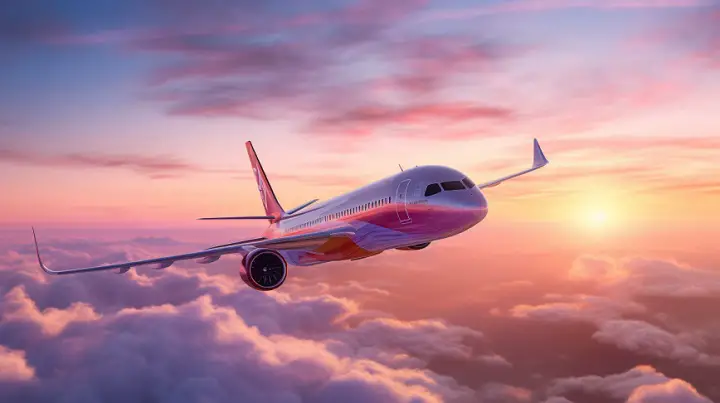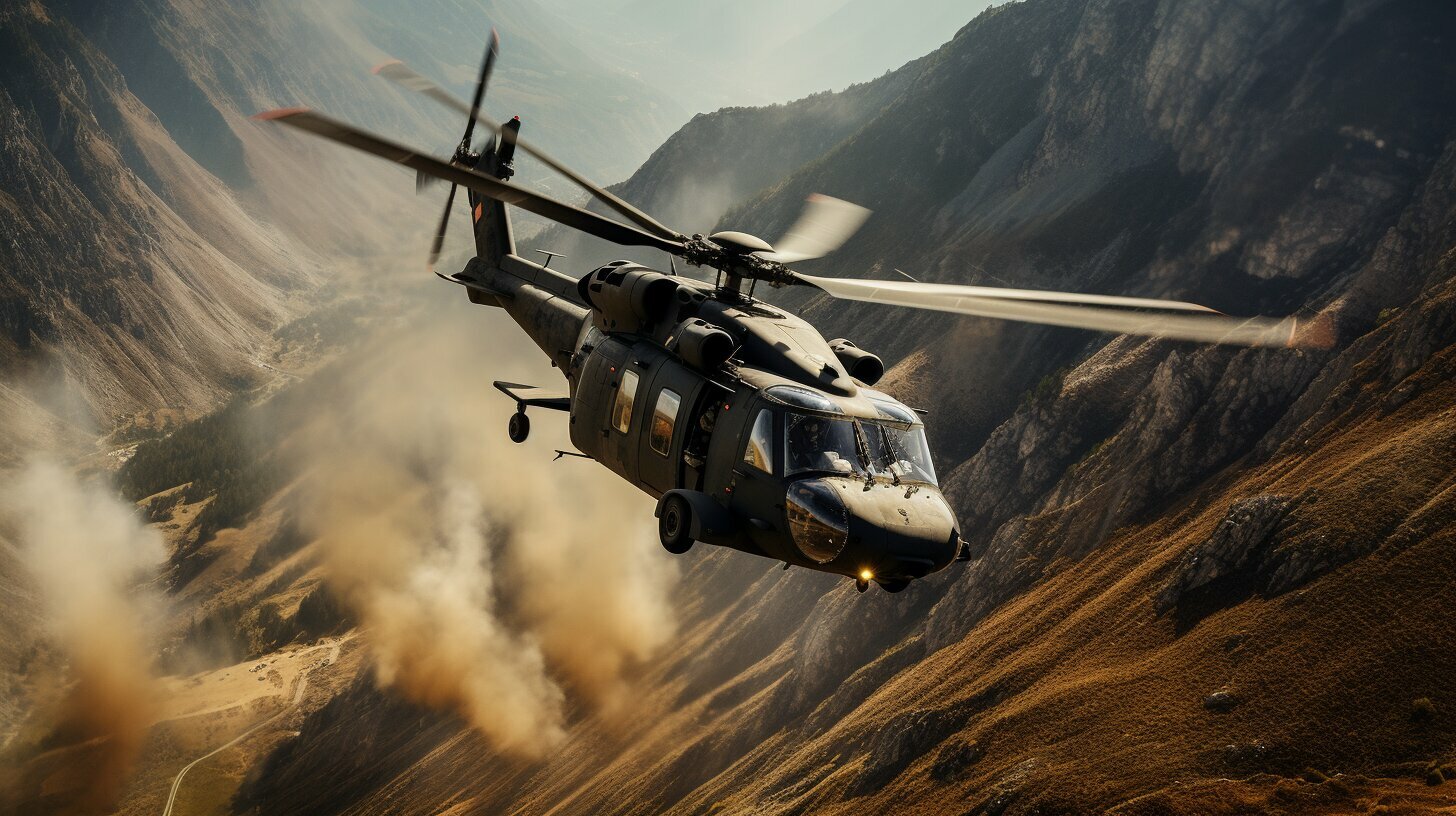
Can Flying Taxis Replace Helicopters?
The concept of flying taxis, also known as air taxis or vertical take-off and landing (VTOL) aircraft, has gained a lot of attention in recent years. Companies like Joby Aviation, Lilium, and Volocopter are working on developing electric aircraft that can take off and land vertically, like helicopters, but are quieter, more affordable, and can be flown autonomously.
Proponents of flying taxis believe they could revolutionize transportation in and around cities by providing an alternative to congested roadways. But could these electric vertical takeoff and landing (eVTOL) aircraft eventually replace helicopters for most use cases? Here are some key factors to consider:
Advantages of Flying Taxis Over Helicopters
Lower Operating Costs
One of the main selling points of flying taxis is that they are projected to have much lower operating costs compared to helicopters. Helicopters require complex mechanical systems including the main rotor, tail rotor, transmission, and engine, which makes them expensive to maintain and operate.
Flying taxis utilize distributed electric propulsion, meaning they have multiple smaller rotors driven by electric motors spread across the aircraft. This simpler system with fewer moving parts is anticipated to require less maintenance and be cheaper to operate per flight hour. For example, Joby Aviation estimates their aircraft could have 2-4x lower operating costs than conventional helicopters.
Greater Efficiency and Longer Range
The distributed electric propulsion of flying taxis also enables greater aerodynamic efficiency, meaning they can fly longer distances on a single charge. Most eVTOL designs have wings for lift during forward flight, allowing them to cruise efficiently once airborne rather than relying entirely on energy-intensive vertical lift rotors.
For example, Lilium’s designs are projected to have over 155 miles of range, much further than most helicopters can fly before needing to refuel. This efficiency could make flying taxis feasible for longer regional trips.
Potential for Higher Safety
Having multiple smaller rotors provides redundancy – if one fails, the others can compensate to safely land the aircraft. Combined with fly-by-wire flight controls and autonomous operation, proponents argue flying taxis could be safer than helicopters piloted by humans.
For example, Volocopter’s aircraft have 18 rotors, meaning they can still land safely if multiple rotors fail. Autonomous operation removes human error from flying and bad weather decisions. These factors could theoretically improve the overall safety profile.
Quieter Operation
Due to their fully electric propulsion, flying taxis are expected to have lower noise signatures than combustion engine helicopters. This could make them less annoying and more acceptable for urban operations. For example, Joby Aviation claims their aircraft is 100 times quieter than conventional helicopters.
Smaller Footprint for Takeoff/Landing
Some flying taxi designs utilize tilting rotors or wings to transition from vertical takeoff to forward flight. This means they do not require as large of landing pads as helicopters, and could takeoff and land in tighter urban areas.
For example, Volocopter’s multicopters can takeoff and land vertically on an area about the size of two parked cars – much smaller footprint than a helipad. This enables more convenient urban operations.
Potentially Higher Cruising Speeds
Helicopters typically cruise at around 150 miles per hour. However, some flying taxi designs are targeting higher cruising speeds of 200+ miles per hour, by utilizing aerodynamic wings for lift in forward flight. This could reduce trip times compared to helicopters.
Disadvantages & Challenges for Flying Taxis
While flying taxis have some advantages over helicopters on paper, there are still many disadvantages and challenges to overcome before they can become a widespread transportation method.
Unproven Technology & Certification
Flying taxis are still very early in development – no models have yet been certified by aviation regulators like the FAA. The certification process for each unique aircraft design is complex, requiring extensive flight testing to prove safety. This process is expected to take many years.
Until these aircraft are thoroughly tested and certified, questions remain about their real-world safety, reliability, noise levels, and performance. Their widespread adoption for passenger transportation won’t happen until regulators are satisfied.
High Development Costs
It will likely cost upwards of $1 billion to take an eVTOL design through development, flight testing, and certification. This will limit which companies have the financial resources to successfully launch a flying taxi service. Given the technical complexity, some designs may fail during testing. The high costs pose a barrier to entry.
Infrastructure Requirements
To scale up beyond small-scale operations, flying taxi services would require development of a network of takeoff/landing pads (called vertiports) and charging infrastructure in cities. This new infrastructure could cost billions of dollars to build out. The Vertiport Master Plan for Los Angeles estimates $122 million just for 15 vertiports in L.A. Scaling up nationally would be very expensive.
Public Acceptance Questions
The public may not readily accept or demand flying taxi services unless they provide clear benefits versus ground transportation. Concerns around noise, privacy, and safety could limit public support. It remains to be seen if the convenience will outweigh these concerns for the majority of travellers. Polling suggests many people are skeptical.
Battery Energy Density Limits
Despite rapid improvements, today’s best lithium-ion batteries still only provide about 1/40th the energy density of aviation fuels on a per weight basis. This limits the range and payload capacity versus fossil fuel helicopters, unless the batteries get much heavier. Battery technology needs to keep advancing to close this gap.
High Cost Per Passenger Trip
Even if operating costs are lower, the upfront development and infrastructure costs will need to be amortized. So the per-seat cost of a short urban flying taxi trip is likely to be much higher than ground transport options. Prices would have to fall substantially for widespread adoption.
Weather Reliability Questions
Weather reliability is crucial for mass adoption of flying taxis. Fully autonomous operation is still challenged by heavy rain, snow, hail, and high winds. More development is needed so these aircraft can safely handle all weather conditions common in cities. Otherwise, utilization rates and convenience may be too low.
Comparison of Helicopters vs. Flying Taxis
| Factor | Helicopters | Flying Taxis |
|---|---|---|
| Operating Cost per Flight Hour | Very high due to maintenance of complex mechanical systems | Potentially much lower due to electric propulsion and fewer components |
| Capital Cost per Aircraft | $3 – $30 million for modern light-medium helicopters | Still to be proven, but may be cheaper to mass produce |
| Range / Trip Length Capability | 300-500 mile maximum range for light helicopters | Current designs less than 200 miles maximum due to battery limits |
| Cruising Speed | ~150 mph | Some designs target over 200 mph |
| Infrastructure Requirements | Existing heliports can be used | Would require large new vertiport infrastructure investment |
| Safety | Established record, but higher risk than airlines | Unknown – still unproven and undergoing certification |
| Autonomous Control | Very limited currently | Goal of most designs to enable full autonomy |
| Noise Levels | High noise from combustion engines and rotors | Expected to be quieter due to electric propulsion |
| Takeoff/Landing Area | Require substantial helipads | Some models only need space of 1-2 parked cars |
| Adverse Weather Capability | Generally good capability | Unproven in snow, heavy rain, etc. |
| Public Acceptance | Reasonably high for elite/urgent needs | Unknown if majority will adopt for urban transport |
| Price Per Passenger Trip | $200-$300 for typical helicopter shuttle service | Likely higher initially due to development costs |
Scenarios Where Flying Taxis Excel vs. Helicopters
If flying taxis overcome the challenges around certification, infrastructure, and costs, there are some specific use cases where they could excel compared to traditional helicopters:
- Short urban/suburban hops – Flying taxis would be ideal for quick trips of around 20-60 miles within a metro region, where their efficiency and small takeoff/landing footprint make them significantly faster door-to-door than ground transport. Helicopters are overkill for these shorter hops.
- On-demand inner-city transport – With vertiports positioned around a city, flying taxis could provide quick on-demand inner city transport, bypassing congested roads. For example, trips from city outskirts to city centers for commuters.
- Airport shuttle services – Flying taxis could offer inexpensive airport shuttle services to/from downtown areas and surrounding suburbs, competing with ground transportation.
- Medical transport from remote incidents – Their vertical takeoff ability allows quick medical retrieval from locations without accessible roads. Higher cruiser speeds than helicopters could get patients to hospitals faster.
- Affordable aerial tourism – Overfly interesting areas or quickly access tourist destinations. Short 20-30 minutes tours could be affordable to more people compared to helicopter tours.
- Connecting regional destinations – Flying taxi links between smaller regional cities could enable day trips for leisure, business, or commuting, especially where ground transport options are limited or indirect.
Scenarios Where Helicopters Still Work Better
However, there are still many scenarios better suited to conventional helicopters instead of flying taxis:
- Search and rescue operations – The longer range, ability to hover, and payload capacity of helicopters makes them far more capable of remote wilderness search and rescue operations. Flying taxis have limited battery-powered range.
- Aerial firefighting – The endurance and heavy-lift capacity needed for activities like fire suppression buckets and transporting fire crews necessitates capabilities that only helicopters currently possess.
- Long distance transports – The advantage for helicopters increases with flight distance due to flying taxis’ short range. Helicopters will still be preferred for long range air ambulance trips between distant hospitals and other long flights.
- Tourism over remote areas – The limited range of flying taxis makes helicopters the only option for aerial tours over long distances or remote areas far from charging infrastructure.
- Heavy cargo transport – Flying taxis will have very limited cargo capacity compared to large transport helicopters. Heavy lifter helicopters maintain clear advantages hauling bulky cargo to remote areas.
- Specialty missions – Uses like external load operations, insertion/extraction of personnel, and aerial observation still require capabilities only available from helicopters. Flying taxis lack the lift capacity, cabin space, or special equipment.
Timeframe for Adoption
Urban air mobility with flying taxis is a long-term plan, with widespread commercial adoption likely 10+ years away. It will take that long to thoroughly test and certify these aircraft, build out necessary charging infrastructure, drive down costs, and earn public acceptance.
Gradual adoption is expected starting in the mid-2020s, but initially limited to small-scale operations of just a few specific aircraft models in select cities worldwide. Fleets of hundreds or thousands of multi-passenger flying taxis in cities are unlikely before the 2030s at the earliest.
Helicopters will continue dominating longer range flights, heavy cargo, search and rescue, and other specialty uses for the foreseeable future even as flying taxis carve out a niche with new specialized capabilities. Rather than a wholesale disruption, adoption will likely be gradual.
Conclusion
Flying taxis have the potential to be significantly faster and more affordable than helicopters for short urban and suburban trips thanks to electric propulsion, autonomous control, and smaller takeoff/landing footprints. But conventional helicopters still maintain significant advantages for longer range operations, heavy cargo capacity, adverse weather resilience, and specialty capabilities.
Widespread adoption of flying taxis faces huge challenges around unproven technology, high costs, infrastructure needs, and public acceptance. It will take at least 10 years before they begin making a meaningful impact on urban transportation. In the long run, flying taxis and helicopters will likely serve complementary roles sharing the aerial mobility market. Rather than replacing helicopters outright, flying taxis are more likely to expand the aviation industry by making new types of mass air transit possible.
Frequently Asked Questions (FAQs)
How much will flying taxi trips cost?
When first introduced, the cost per passenger trip is expected to be $100-$300 given the high development costs. Prices would need to fall to around $50-$75 per trip to become affordable for the masses. It’s likely to take many years before prices reach that level.
How fast can flying taxis fly?
Some models target cruising speeds of 150-200 mph. However, for initial urban deployments speeds are likely to be limited to under 150 mph for safety and noise considerations. Maximum speeds may increase gradually over time with future autonomous traffic management systems.
When can I ride in a flying taxi?
You likely won’t be able to take a flying taxi trip for at least 5-10 more years. It will take that long to thoroughly finish testing and certification programs. Initial adoption after certification will be very limited in scale, focused on a few specific cities and routes. Widespread adoption in major cities globally may not occur until the 2030s.
Are flying taxis safe?
It is too early to know precisely how safe flying taxis will be relative to helicopters and ground transport. However, their autonomous control systems and distributed electric propulsion should enable high levels of redundancy and safety assuming they complete thorough flight testing. But expect it to be years before safety levels are proven.
How far can flying taxis fly on one charge?
Most current designs have a maximum range of 100-200 miles, limited by battery energy density. However, for typical urban/suburban hops of around 20-60 miles, they should be able to complete multiple trips before recharging. Charging infrastructure will need to be built out to enable longer distance travel.
How weatherproof are flying taxis?
One of the biggest unanswered questions is how flying taxis will fare in diverse weather like heavy rain, snow, hail, and winds. More development is needed to ensure they can operate reliably year-round in any city’s climate. Their limited flight testing has mostly occurred in fair weather so far.
How much noise do flying taxis make?
Their electric propulsion helps minimize noise versus helicopters, but having multiple rotors still produces some unavoidable noise for takeoff and landing. During cruise, they are expected to be much quieter than helicopters. But overall noise levels remain uncertain – public perceptions will depend on factors like the vertiport proximity to houses.
Will flying taxis require pilots?
Most designs and plans call for fully autonomous flying taxis that do not need onboard pilots. Some may have remote oversight, but a key advantage is removing the cost of pilots. However, regulators may still require pilots initially until autonomous operations are proven safe through extensive flight hours. Some limited piloting capability may be retained for rare manual takeover.
How many passengers can flying taxis carry?
Early designs carry anywhere from 2 to 6 passengers. Larger models that carry 10+ passengers could be developed over time, but likely not until after initial deployment of smaller aircraft. Early adoption will focus on ferrying smaller groups rapidly around congested cities.
Can flying taxis operate from existing heliports?
Some existing heliports, especially smaller ones, may be usable by flying taxis. But most will require infrastructure upgrades to add charging capabilities. And increased use will likely necessitate expanded vertiport infrastructure, whether co-located with heliports or new standalone sites. Existing heliports alone won’t enable large-scale operations.
Will flying taxis be used for cargo shipping?
The limited payload capacity of under 1 ton means flying taxis won’t replace large cargo helicopters or trucks for mainstream shipping needs. But some models could carry specific light but urgent shipments like medical supplies between hospitals. Cargo transportation won’t be a primary use case initially but could grow over time.






